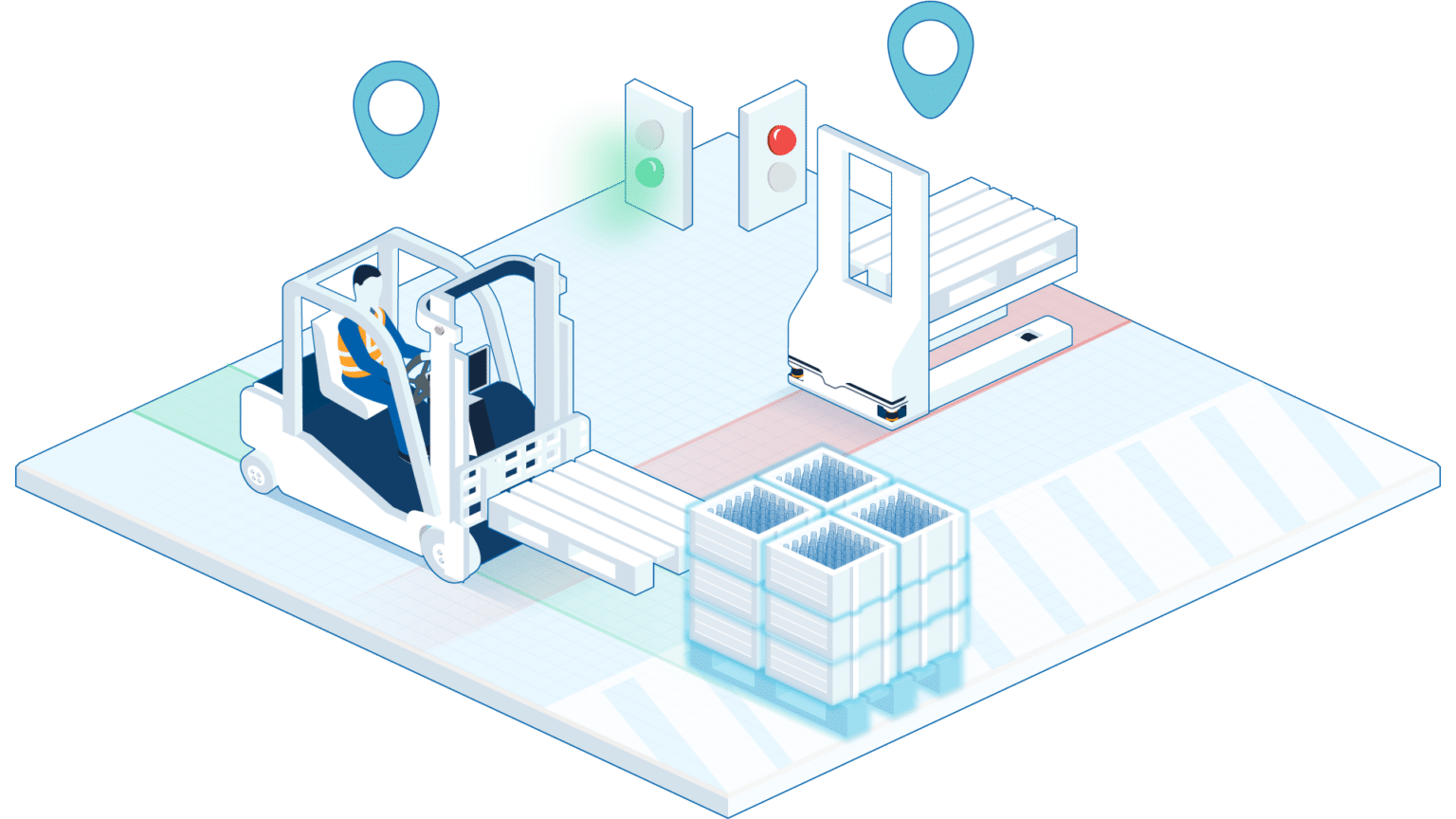Precise Pickups: How ANT Pallet Detection Works
What level of pickup precision is achievable with ANT natural feature navigation? This quick guide explains exactly how pallet detection (and the detection of other objects) works, courtesy of ANT trackers.
Vehicles driven by ANT natural feature navigation achieve positioning accuracy of 1 cm. This is essential for effective navigation around a site. However, a vehicle knowing its own position is one thing, accurately detecting and picking up an object is quite another.
The detection challenge
If a manual worker with a pallet jack, say, deposits a pallet in a designated area, this positioning is rarely centimeter-accurate – they just drop it!
If the next person to collect the object is human, that’s no problem. But AGVs and AMRs are programmed to work more precisely than this. By default, AGVs need an object to be exactly where they are programmed to collect it from.
The key to success is having a navigation system flexible enough that it can cope with a little imprecision. That’s where ANT trackers come in.
How ANT pallet detection works
ANT tracker is a set of features, which are configured in BlueBotics’ ANT lab configuration software. Several different types of trackers are available, each designed to detect a different category of object (pallet, rack etc.).
In ANT lab, the user simply defines a ’payload detection area’ in ANT lab (the approximate spot where a pallet or object will be found). Trackers then use a vehicle’s laser scanner data to identify the features of a target object, such as a pallet or rack. With this position known, ANT corrects the vehicle’s trajectory to ensure an accurate detection and pickup.
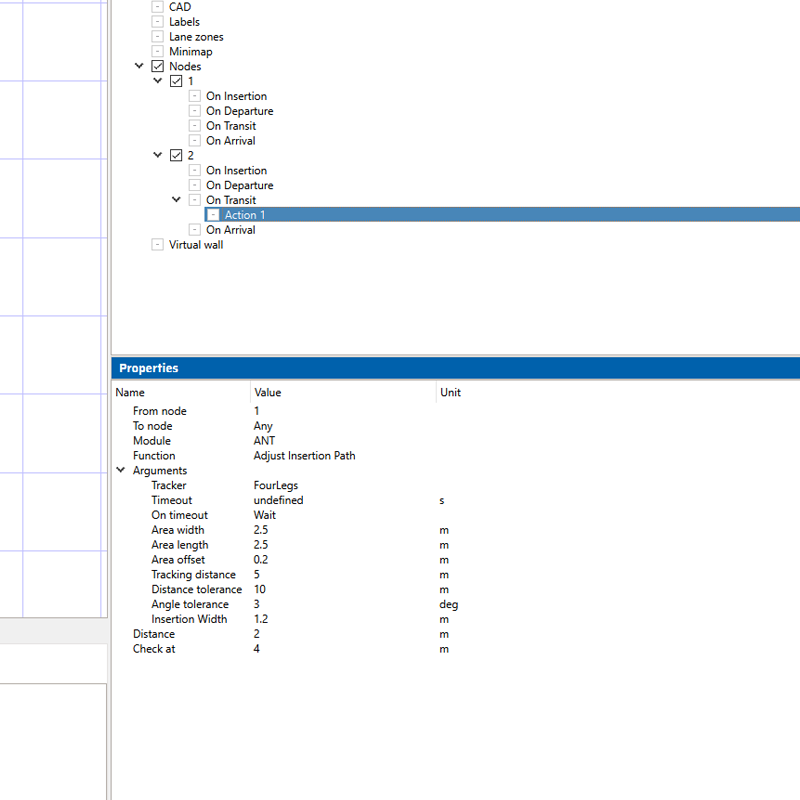
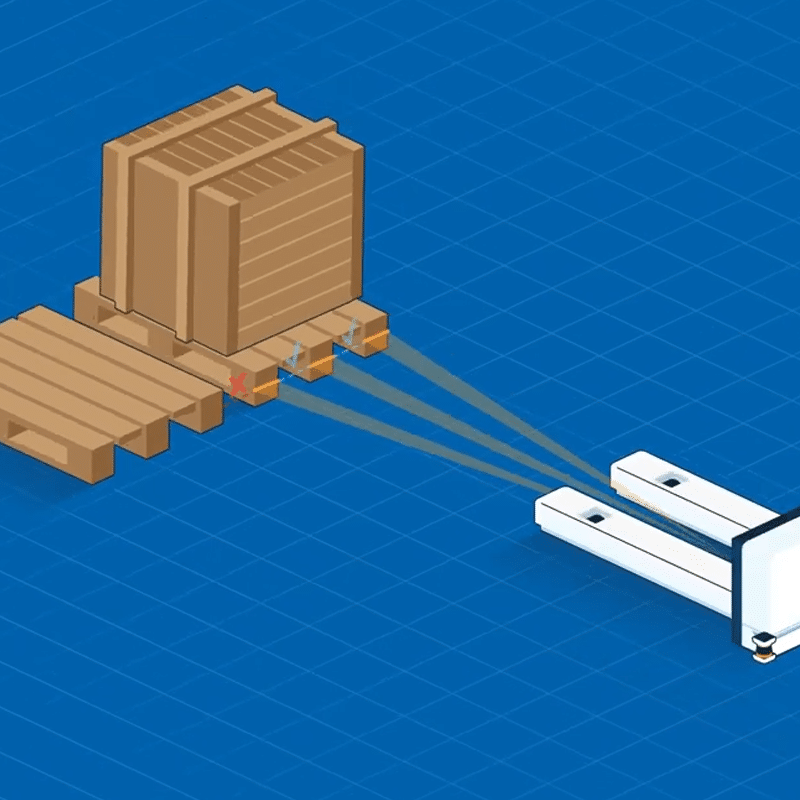

The ‘payload detection area’ can be defined by users in ANT lab. During operation, ANT tracks the target and adjusts the vehicle’s trajectory on the fly. Finally, the vehicle picks up the payload.
What ANT trackers are available?
Four types of ANT tracker are currently available:
- Pallet tracker: for detecting multiple types of pallets (including custom formats)
- Four-leg tracker: for detecting racks/wheeled trolleys/tables
- Hitch tracker: for detecting the tow bar/hitch mechanism of a towed cart system/dolly train
- External tracker: for detecting custom payloads (e.g. used by AGVs with a clamping mechanism that grabs large objects/boxes)
ANT trackers are included by default with ANT lite+ and ANT localization+ systems.
Benefits of ANT trackers
ANT’s tracker functionality offers three key benefits:
- Highly accurate object detection: no matter how badly an object is placed, irrespective of the correction angle or distance, ANT’s Pallet Tracker can find it
- Quick pick up: the vehicle’s trajectory is adjusted while it is moving, rather than stopping and then changing direction. This difference can save up to a minute per pickup.
- Flexibility: with several types of ANT tracker available – including the highly customizable External Tracker – any type of object can be accurately detected
What accuracy do companies require?
The level of positioning accuracy a customer requires from its mobile robots will depend on its operation and the specific processes its team is looking to automate.
When we asked logistics professionals about this issue, as part of our Automated Vehicles in Material Handling 2022/2023 Usage Report, we found that 47% of respondents ranked positioning/docking accuracy as extremely important, very important or important, when choosing which automated vehicle to purchase.
This feedback illustrates that features like ANT trackers are valuable inclusions that your future customers will undoubtedly value.
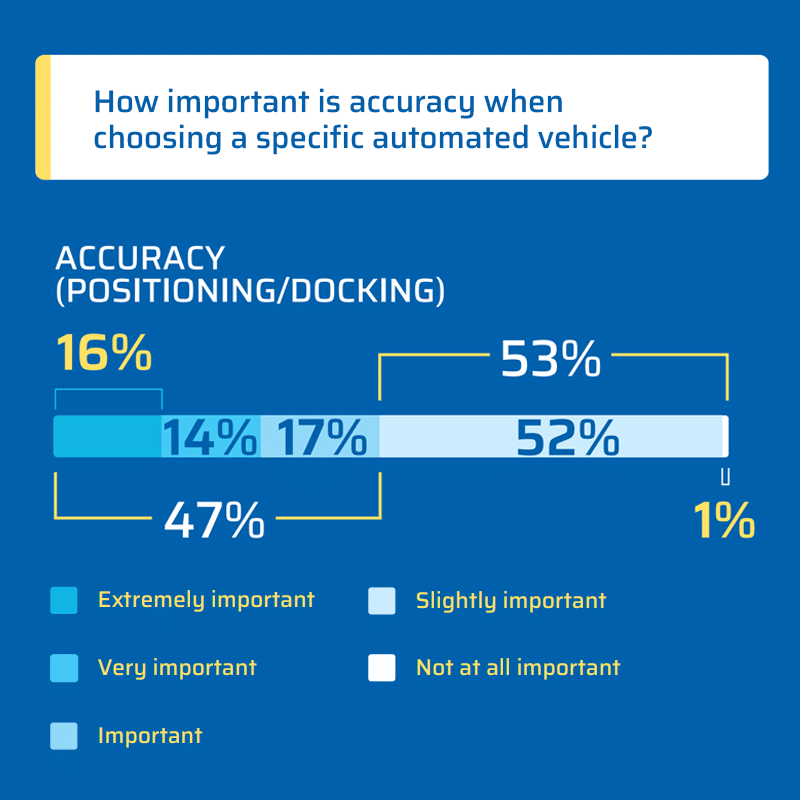
Find out more and download the full Usage Report on ANTdriven.com.
Let’s talk pallet detection
Got a question about ANT trackers? Let’s discuss it further in a free Discovery Call with our expert team. Get in touch to schedule a call today.
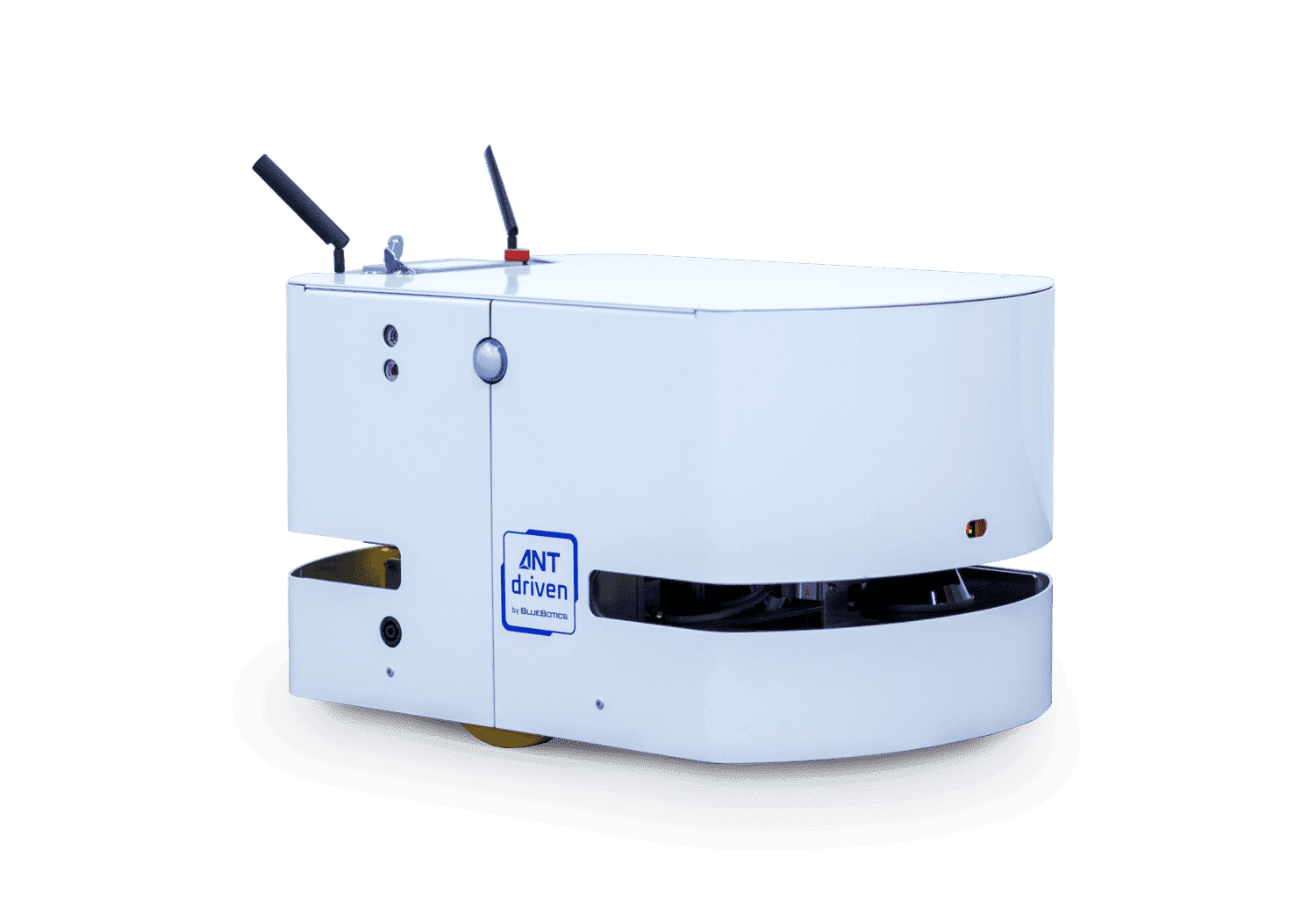
Let's get Started
Take the first step to automating your vehicle.
Schedule a call with our expert team today.
